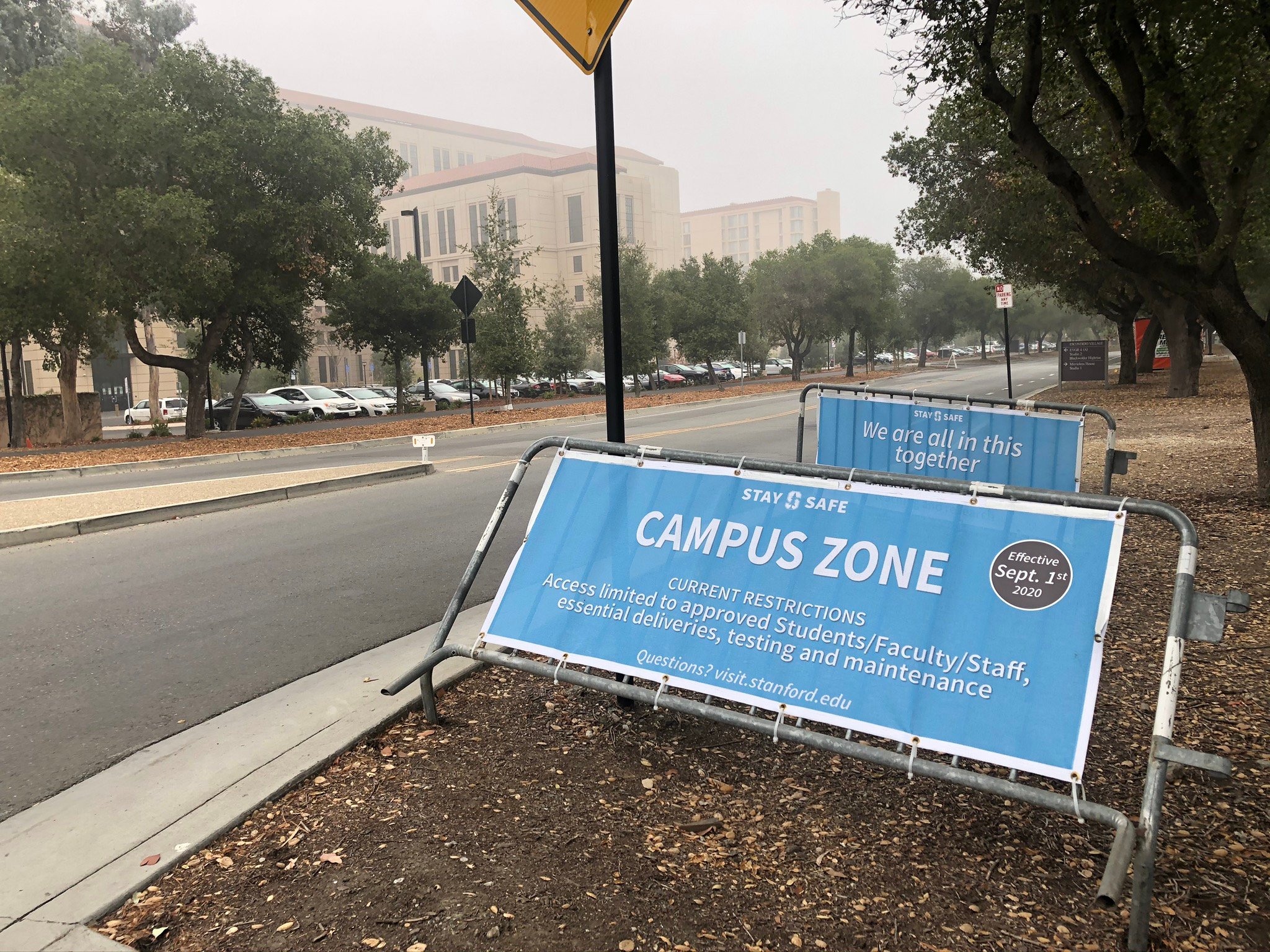Stanford announced on Oct. 15 that there had been 139 reported violations of Stanford’s public health rules on campus. But the actual number may exceed this figure, according to resident assistants (RA), community associates (CA) and students living on campus.
Amid a sudden spike in the number of COVID-19 cases on campus and reports that hundreds of students may not be compliant with Stanford’s testing policy, the University continues to reiterate plans for frosh and sophomore students to come to campus winter quarter.
RAs are responsible for reporting violations of the Campus Compact through a Community Concern Submission form, but the University has not given them any information about who is in each ‘household,’ according to Susie Garcia ’22, an Escondido Village Graduate Residences RA. Students are only permitted to interact without a face covering with those in their household, a group of up to eight students living in the same building.
Prior to the policy, RAs would intervene if they noticed a gathering or heard voices coming from a room, but Garcia said that now, they often assume that it is someone’s household.
In an email sent to EVGR CAs on Oct. 2, the University instructed them that “if individuals are gathering in groups of eight or less, it may be assumed that they are in a household.”
The University “seem[s] to have no concept of what kinds of things are actually enforceable,” Garcia said. “They create these idealistic rules and give us no ways to actually enforce them, unless we were to be watching every student in the building at all times.”
K.C. Shah J.D. ’22, who currently lives on campus, thinks it is plausible that students may be continuing to violate the Compact by gathering with members outside their household.
“If there are eight people outside together, I think it is going to be difficult to identify which individuals are in a household,” Shah said. “I don’t have a problem with the lack of enforcement in that context, because we want people to organize safe, small activities that are socially distanced with people wearing masks. But at some point, students will identify certain limits on gatherings that are not being enforced as arbitrary, and administrators need to do a better job of articulating the reasons for these restrictions to ensure compliance.”
Eva de la Serna, a CA and fourth-year Ph.D. candidate in chemical engineering, said that due to a lack of clear communication from the University, many students may be confused as to what conduct is allowed under the Compact guidelines. De la Serna said it was not clear to her what criteria were used to determine which violations would be taken up by the compact review panel.
A recent Re-Approaching Stanford newsletter stated that the University has responded to violations “by inviting students to follow-up conversations with RDs, CDs, GLO Deans, or Stanford Athletics.” If the violation is deemed to be mid- or high-level — for example, participating in a party or other indoor gathering with members of different households — the student may be required to participate in additional training, or be referred to the Compact Review Panel, according to the Campus Compact.
Currently, no violations have been forwarded to the Compact Review Panel, according to the Re-Approaching Stanford newsletter. “No students have been removed from campus, including housing, in response to reported compact violations,” wrote Student Affairs spokesperson Pat Harris in an Oct. 15 email to The Daily.
Harris noted that violations so far involved “social gatherings, facial coverings, essential visitors, and physical distancing.”
Asked for a breakdown of violations at each level of severity and how many distinct students were responsible for the 139 violations, the University declined to comment.
While RAs are responsible for actively enforcing the Campus Compact in undergraduate residences, graduate residences rely on students and CAs to report violations. However, CAs do not have any special responsibility to enforce the compact compared to other graduate students, according to de la Serna. She noted that the reliance on community reporting likely leads to unreported violations.
Asked if she thought students were fully utilizing the form, de la Serna said she didn’t “think that all students even know that [it] exists.”
“The complexity of the emails the University sends means a lot of information gets missed,” she added. “I’ve had friends come up to me and ask if they should page the GLO Deans to report a violation, and when I tell them that a specific form exists, they’re surprised.”
A previous version of this article incorrectly stated Susie Garcia’s last name. The Daily regrets this error. A previous version of this article incorrectly referred to residential assistants as residential advisors. The Daily regrets this error.
Contact Tammer Bagdasarian at tbag ‘at’ stanford.edu and Sam Catania at samcat ‘at’ stanford.edu.
